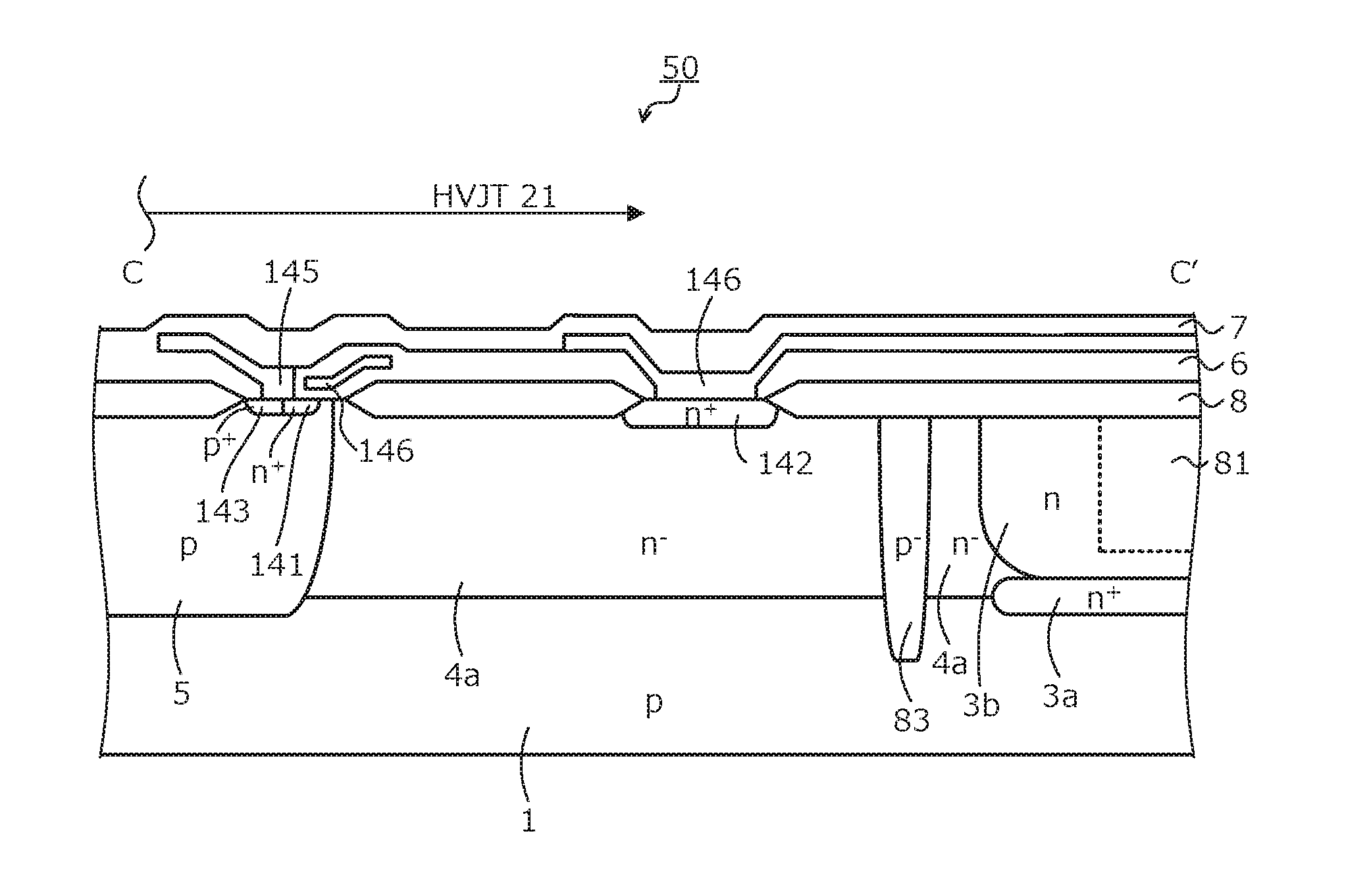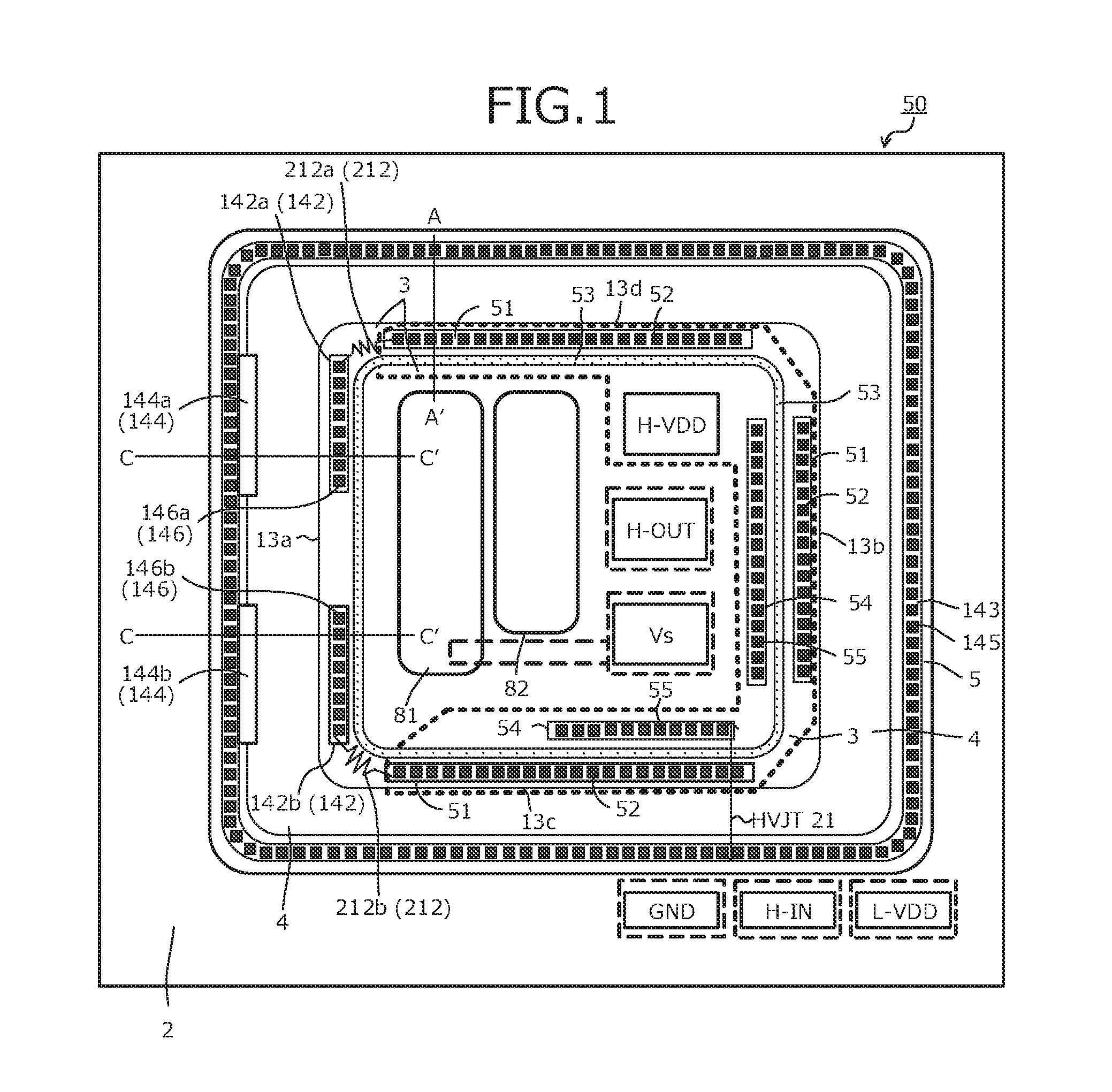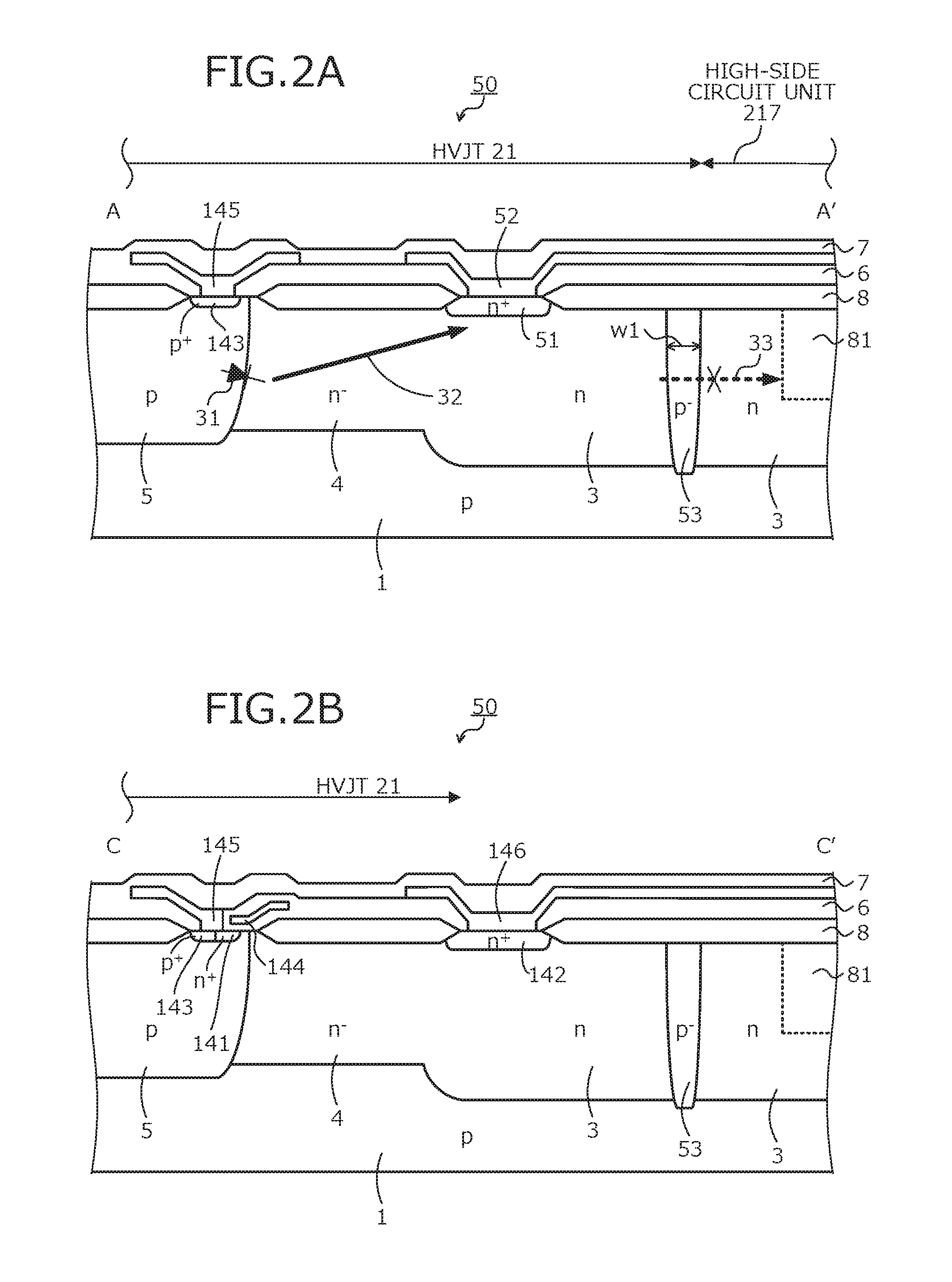Semiconductor integrated circuit device
a technology of integrated circuits and semiconductors, applied in the direction of logic circuit coupling/interface arrangement, logic circuit coupling/interface using field-effect transistors, pulse techniques, etc., can solve problems such as breakdown or destruction of hvi
- Summary
- Abstract
- Description
- Claims
- Application Information
AI Technical Summary
Benefits of technology
Problems solved by technology
Method used
Image
Examples
first embodiment
[0073]A planar layout of the HVIC 50 will first be described. As depicted in FIG. 1, the HVIC 50 includes a high-potential region, a low-potential region, and a HVJT 21 on a p-type semiconductor substrate (semiconductor layer of a first conductivity type) 1. The high-potential region is a region to which voltage at a potential of an H-VDD (a third potential) and voltage at a potential of a Vs (a second potential) of the HVIC 50 are applied. For example, the high-potential region is an n-type well region (first well region of a second conductivity type) 3 disposed on the front surface side of the p-type semiconductor substrate 1. For example, in the high-potential region, a high-side circuit unit (second circuit unit), which is a peripheral circuit of the level shifter circuit, is disposed.
[0074]The low-potential region is a region to which voltage at a potential of an L-VDD (fourth potential) and voltage at a GND (first potential) of the HVIC 50 are applied. For example, the low-po...
second embodiment
[0116]Alternately, the second embodiment may be applied such that the dielectric region 73 is disposed between the n-type well region 3 and the n−-type well region 4 so as to contact the n-type well region 3 and the n−-type well region 4. The trench 71 may be formed to penetrate the n−-type well region 4 from the substrate front surface to the remaining portion of the p-type semiconductor substrate 1 and the dielectric material film 72 may be embedded such that the dielectric region 73 is interposed between the n−-type well regions 4 located on the chip center side and the chip perimeter side.
[0117]Even when the fourth embodiment is applied to the second or third embodiment described above such that the dielectric region 73 is disposed instead of the p−-type isolation region, effects identical to those of the fourth embodiment are achieved.
[0118]As described above, the fourth embodiment achieves effects identical to those of the first to third embodiments.
[0119]A structure of a semi...
fifth embodiment
[0120]FIGS. 9A and 9B are cross-sectional views of a main portion of a high-voltage integrated circuit device according to the In an example of an embedded epitaxial growth substrate of FIGS. 9A and 9B, after introducing into the surface of the p-type semiconductor substrate 1, impurities for forming an n+-type embedded layer 3a, an epitaxial layer 4a is stacked on the p-type semiconductor substrate 1, and an n-type well region 3b formed by a layer diffused from the surface of the epitaxial layer 4a is formed on the n+-type embedded layer 3a. A p−-type isolation region 83 is made of a diffusion layer extending from the surface of the epitaxial layer 4a to the p-type semiconductor substrate 1.
[0121]Even when the fifth embodiment is applied to the second or fourth embodiment described above to use the epitaxial substrate or the embedded epitaxial substrate, effects identical to those of the fifth embodiment are achieved.
[0122]As described, the fifth embodiment achieves effects identi...
PUM
 Login to View More
Login to View More Abstract
Description
Claims
Application Information
 Login to View More
Login to View More - R&D
- Intellectual Property
- Life Sciences
- Materials
- Tech Scout
- Unparalleled Data Quality
- Higher Quality Content
- 60% Fewer Hallucinations
Browse by: Latest US Patents, China's latest patents, Technical Efficacy Thesaurus, Application Domain, Technology Topic, Popular Technical Reports.
© 2025 PatSnap. All rights reserved.Legal|Privacy policy|Modern Slavery Act Transparency Statement|Sitemap|About US| Contact US: help@patsnap.com



